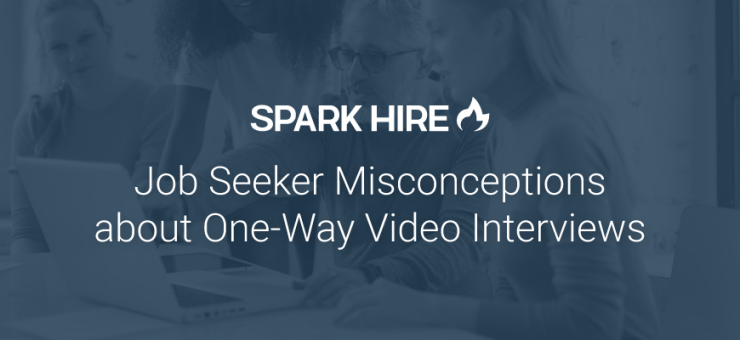The video interviewing process isn’t always sunshine and rainbows. Video interviewing offers hiring teams great benefits. Candidates, however, may hold some incorrect assumptions about the process. We’ve collected four of the most common misconceptions job seekers have about video interviews to put them to rest, once and for all.
Employers don’t want to spend the time with me
Video interviews actually allow hiring teams to spend more time with candidates at the screening stage. By reviewing one-way video interviews on their own time, hiring teams gain insights on candidates faster. Especially now, there’s only so much time during the day your team can spend on phone screens. When you can screen candidates through video rather than just resumes, you learn more about every candidate. With a one-way video interview and resume, you can be less stringent with time spent on each candidate. Reviewing more one-way interviews means you are able to pull from a larger pool of qualified applicants for later stage interviews.
Additionally, video interviews get candidates in front of more members of the hiring team. Most hiring managers either don’t have access to, or the time to assist in the screening step of the candidate vetting process. Using video interviews, hiring managers can easily weigh in, giving more candidates the opportunity to be seen. Another perk of improved candidate exposure to the hiring team comes when a reviewer finds a candidate will be a better fit for a different position. This means, with one application, a candidate applied for many jobs!
This is a replacement for an in-person interview
Most hiring organizations use one-way video interviews early in the hiring process as a replacement or complement to a phone screen, not as a replacement for an in-person interview. This means candidates don’t lose out on the ability to impress you in person. Rather, candidates get the opportunity to show how well-suited they are for your organization earlier in the process. When candidates show their true selves on video, and what they are passionate about, they stand out.
One-way video interviews also allow more members of the hiring team to collaborate on the final list of in-person interviews. Meaning candidates can impress the hiring team before they even step foot in the office. Talk about making a great first impression!
Nobody watches / I’m talking to a robot
One-way video interviews are not a virtual assistant operator you get when calling a company. Instead, one-way video interviews go straight to the hiring team. Candidates can, and should, frame their video responses directly to you. Hiring teams further enhance the candidate experience and remind candidates you’re on the other side of their screen with intro and outro videos. Use these videos to thank candidates for their time, remind them how much you appreciate their interest in your organization, and describe the next steps of your hiring process after they submit their one-way video interview.
Employers use one-way interviews to discriminate
As a hiring pro, we know no hiring team should discriminate, ever. As long as you follow non-discriminatory people practices, video interviewing does not make your hiring practices discriminatory. We keep close eye on rulings about video interviews. The EEOC has ruled many times that video interviewing is not inherently discriminatory. In fact, one-way video interviews should actually decrease the amount of unconscious bias in the hiring process. One of our customers even uses our one-way video interviewing technology to break stereotypes.
Building or creating a flexible hiring process, especially one that can be 100% remote, means using HR technology. Candidates might be concerned about new HR tech but despite these misconceptions, candidates with a true interest in your organization complete your one-way video interviews and go on to success at your organization.











